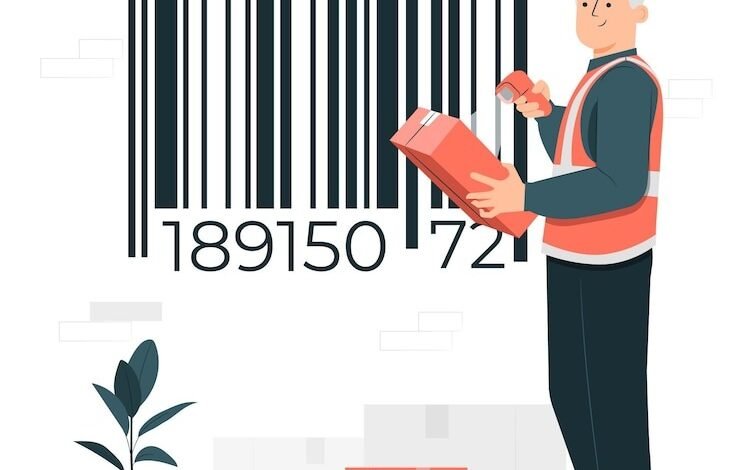What is a Library Management System? Enhancing Efficiency with Barcoding Technology

Libraries are vital resources for learning, research, and the preservation of knowledge. However, managing large volumes of books, periodicals, and other resources efficiently can be a challenge. This is where a Library Management System (LMS) comes into play. In this article, we will explore what a Library Management System is, its benefits, and how incorporating a barcoding system can enhance library operations.
Understanding Library Management Systems
A Library Management System (LMS) is an integrated software used by libraries to manage their operations effectively. From cataloging books to tracking borrowed materials, an LMS automates the routine tasks of library management, providing an efficient solution to manage resources and interactions with users.
The primary functions of a Library Management System include:
- Cataloging: The system organizes books and other resources by maintaining a digital catalog with details like author, title, publisher, genre, and more. This makes it easier to search for materials and retrieve them quickly.
- Circulation Management: This includes tracking the check-out and return of books, magazines, and other items. The system automatically updates inventory, ensuring an accurate count of available resources.
- User Management: Libraries serve various patrons, including students, researchers, and faculty. The LMS helps in managing user profiles, borrowing history, and other personal data while maintaining confidentiality and security.
- Inventory Tracking: LMS provides tools for monitoring library inventory in real time. It helps manage acquisitions and reduce the chances of loss or theft by providing alerts on overdue items.
- Reporting and Analytics: The system generates detailed reports on resource usage, lending history, and user behavior. These insights can assist library management in making informed decisions about acquisitions, budgeting, and resource allocation.
Importance of a Library Management System
Implementing an LMS simplifies library operations and enhances overall user experience. It offers several advantages:
- Improved Efficiency: Automating routine tasks such as cataloging, circulation, and inventory reduces human errors and saves time.
- Better User Experience: Patrons can easily search for and borrow books, making library usage more convenient.
- Real-time Tracking: LMS allows real-time monitoring of library materials, reducing the chances of misplaced or unreturned items.
- Data-Driven Decisions: By generating accurate reports, libraries can assess the demand for books, manage budgets effectively, and plan future acquisitions.
- Security and Accuracy: Sensitive user data is securely stored, and the risk of loss, theft, or damage is minimized.
Barcoding System in Library Management
A barcoding system is a critical component of modern Library Management Systems. It enhances the efficiency of managing books and other library assets by automating the check-in and check-out processes. In a typical barcoding system, each item in the library is assigned a unique barcode. This barcode is then linked to the book’s details in the LMS database.
How Barcoding Systems Work
Barcodes, typically in the form of machine-readable lines or QR codes, are placed on the spine or cover of library items. When a book is checked in or out, the librarian uses a barcode scanner to read the item’s barcode. The scanner links the book with the user’s profile in the system, updating records automatically. This makes the entire process faster and eliminates the need for manual data entry.
Benefits of a Barcoding System
- Faster Transactions: Barcoding systems speed up check-ins and check-outs, allowing librarians to process more transactions in less time.
- Reduced Errors: Manual entry is prone to errors, but with barcode scanning, the chances of mistakes are minimized, leading to better data accuracy.
- Inventory Management: The barcoding system helps librarians quickly track which items are available, borrowed, or overdue, providing real-time visibility into library inventory.
- Efficient Resource Allocation: By tracking user interaction with specific books or materials, the library can determine which resources are in demand and plan future purchases more efficiently.
- Cost-Effective: Though there is an initial cost for setting up a barcoding system, in the long run, it reduces manual labor and improves overall operational efficiency, offering a good return on investment.
- Enhanced Security: A barcode system provides more robust tracking of library materials. In the event of theft or loss, the system allows quick identification of missing items.
Integrating Barcoding into Library Management Systems
Integrating a barcoding system into an LMS can significantly improve workflow. Here’s how libraries typically set up the process:
- Barcode Creation and Labeling: Every item (book, magazine, DVD, etc.) receives a unique barcode label. These barcodes are linked to the specific metadata of each item in the system.
- Scanning at Checkout/Return: When patrons borrow or return items, library staff use barcode scanners to quickly register the transaction in the LMS, which automatically updates the system in real time.
- Inventory Scanning: Libraries can conduct regular inventory checks by scanning barcodes on books and materials. The system will flag any discrepancies between the physical inventory and the records.
- Reporting: Barcodes help generate detailed reports on borrowing patterns, ensuring that libraries can make informed decisions on acquisitions and resource management.
Conclusion
In today’s fast-paced world, a Library Management System is an essential tool for ensuring efficient library operations. By automating routine tasks such as cataloging, circulation, and inventory tracking, libraries can save time, improve service quality, and enhance user satisfaction.
The integration of a barcoding system further amplifies these benefits by streamlining check-out and check-in processes, reducing errors, and ensuring better inventory management. Together, LMS and barcoding technology revolutionize the way libraries function, making them more accessible, efficient, and secure.
Libraries that embrace these technologies will be better equipped to serve their communities in the modern information age. Whether you are a librarian or a library user, the advancements in library management systems are bound to make your experience smoother and more efficient.

